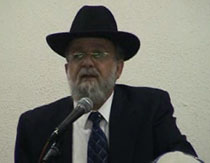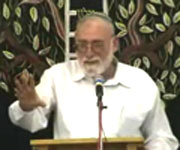Beit Midrash
- Sections
- Chemdat Yamim
- Parashat Hashavua
The Yerushalmi asks on the pasuk: how could the aron have been in Sukkot, if it was really in Tzion? This raises the possibility that there were two aronot. However, the Yerushalmi continues that it is possible that there was only one aron, and sukkot could refer to the fact that at that time the Mikdash did not have a roof over the aron, as the Beit Hamikdash had not yet been built.
According to this, sukkot was not a place but a spiritual state. Along this line, Uriya could have been hinting that David was causing the Divine Presence to be banished, kav’yachol, or was responsible for the delay in the building of the Beit Hamikdash and the aron’s insertion into its rightful location.
We will now explain in greater detail. The aron is the symbol of the dwelling of the Divine Presence (hashra’at haShechina). The famous p’sukim in B’haalotcha about the aron and success in battle (Bamidbar 10:35-36) teach us that the hashra’at haShechina, which the aron represents, depends on the purity of the encampment and brings defeat of the enemy. The keruvim on top of the aron symbolize hashra’at haShechina, and when they face each other, this indicates that "Israel are doing the will of Hashem" (Bava Batra 99a).
The manner in which the keruvim are standing is a clear hint to the idea of marital relationships in sanctity and purity, which is uniquely responsible for the situation of "if they will be meritorious, the Divine Presence will be between them." A sign of this distinction is a "cloud lodged just above the tent," as we will soon see.
Uriya hinted to David that his action with Batsheva was as far as can be from what the aron and keruvim represent. It would prevent the encampment’s sanctity, hashra’at haShechina among the people, and the building of the Beit Hamikdash. David was not yet ready to accept the criticism.
Together with the mention of the aron, Uriya also mentioned Israel and Yehuda. They had, after all, left their homes to fight the nation’s battles and were in sukkot (booths). Thus, sukkot can be explained three ways: 1. A tent-like structure, which was a contrast to the palace David was occupying at the time. 2. The city of Sukkot, in the region of the Gilad, where the troops fighting Amon may have been based. 3. A reminder of the incomplete nature of hashra’at haShechina. This is hinted at in Yeshaya (4:5-6); see Tzofnat Yeshayahu, p. 131.
Since the time there was a cloud above the tent of Sarah, every Jewish family hopes that the yud of ish (man) and the heh of isha (woman) will join and form the name of Hashem, representing the Shechina. Uriya was hinting that this was not the case with David.
We have learned in the past weeks the central place of the aron in the Mishkan, Mikdash, and indeed in the lives of the Jewish nation and the individual. May we merit the full return of the Divine Presence in all its glory.

The National Significance of Intergenerational Connection
Rabbi Yossef Carmel | Kislev 1 5783

Parashat Hashavua: What’s in the Name of Noach?
Rabbi Yossef Carmel | Cheshvan 5786

The Right Pace to Leave a Holy Place
Parashat Beha'alotcha
Rabbi Yossef Carmel | 16 Sivan 5764























